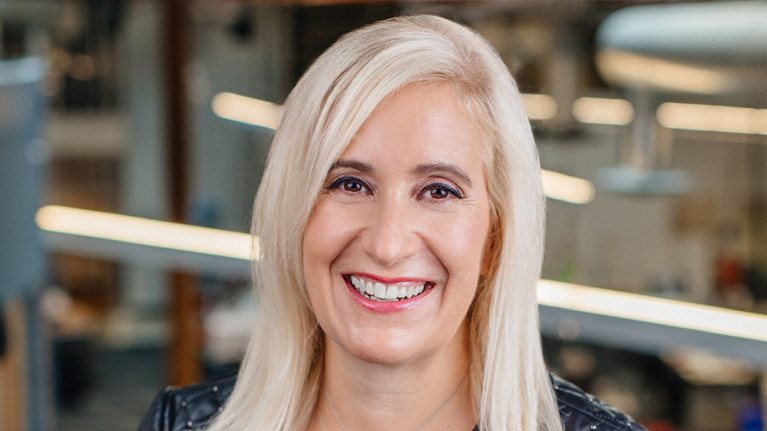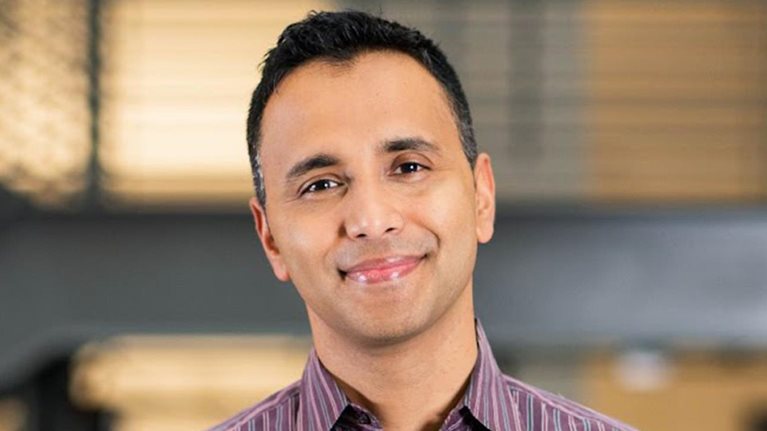The shift to self-driving technology could transform our commutes—and our cities. In five videos, McKinsey experts explore what autonomous mobility could mean for daily routines, urban infrastructure, and consumer trust. Ultimately, the story of autonomous vehicles (AVs) will be less about the cars and more about the new patterns of life and work that they enable. An edited transcript of the conversations follows.
2040: A day in the autonomous life
Ali Rizvi: 2040 may seem far away, but it’s not. When I think about 2040, what really excites me about AVs is the way that they will have affected urban planning. If you think about the way that AVs are starting to operate within our urban cities already—take San Francisco as an example—what you’re starting to see is how efficiently they communicate with each other and the way they follow the rules of the road.
Philipp Kampshoff: I think if you go as far as 2040 or ’50, AV technology will be a commodity. I think everybody will expect that the new cars that you buy have level-four autonomous capability. AV technology is going to be like the shower in your hotel room: You just expect it.
Emily Shao: By 2040, my kids will be in their late teens, early 20s. They probably won’t have driver’s licenses, because they just want to use AVs to get back and forth.
My hope is that even in the near future, maybe before they’re even able to drive, I could put them in an AV and ship them to their activities so that my husband and I could just keep on working, doing what we need to do. And my parents would get to use an AV, as well, to get around and have more mobility.
Mingyu Guan: Ten years, 15 years down the road, I imagine there’s no more need for driver's licenses. All the vehicles on the road will be autonomous driving equipped.
This will free up our time to do something else. The vehicles will make sure that we are safely moving from point A to point B without worrying about anything on the road, so we can focus on more productive stuff that, as human beings, we can uniquely contribute.
Philipp Kampshoff: You could get very creative with what the future of AVs could look like. I could take you even further in the future. It’s not going to happen tomorrow—and probably not in the next five years—but why not imagine, instead of robo-taxis, robo-hotel rooms?
A hotel room comes to your house, you get into it with your family, you have a beautiful bed, you have a beautiful TV, you watch a movie, and everybody falls asleep, and when you wake up, you are in Miami.
The AI revolution
Kersten Heineke: The biggest tech change we’re seeing in autonomous driving is the discussion between end-to-end AI systems and rule-based systems. For the user, that doesn’t really make a huge difference. The difference is the system quality and the faster development speed if you switch to include more AI. We’ll get to see these systems on the road with high quality, high performance, and ultimately high safety levels much quicker.
Ali Rizvi: With the advent of gen AI and AI models, you’re no longer thinking about a car that needs to read the sensors to understand the situation of what’s on the road and use predetermined rules to take the next step.
Imagine you’re sitting in a car. When you drive, you are using all the visual cues that are available, whether a red light or the pedestrians around you. You take the context of that image, and you make a decision. Similarly, companies are starting to think beyond rule-based engineering: “The light turns red; the sign says X, Y, Z; and then I can do this.” Cars are instead taking the full image, passing it through AI and machine learning models, and saying, “It’s safe for me to take the next step”—just like the way that humans drive.
Mingyu Guan: Recently I tested some vehicles in Shanghai in city traffic. I was in the vehicle, and—still several hundred meters out—the vehicle decided to merge lanes. I wondered why; I thought it could have done that at a later time. And then, ten seconds later, I figured out that the lanes had actually already merged. That means the car saw the road that I couldn’t see. I think you can really see that what the technology can do is guarantee more safety.
Changing cities and infrastructure
Kersten Heineke: In my view, by 2035 or 2040, all of the major cities in major countries will be AV friendly, and we will see a tremendous amount of AVs deployed in these cities.
Emily Shao: This isn’t an iPhone or a software thing where you can just deploy it and everyone accepts it. You actually have to crack it city by city. You need to work with the local regulators. You need to set up local infrastructure for charging, for the depots. You need to set up maintenance and all the infrastructure around it. It really is a city-by-city incremental play.
Philipp Kampshoff: Rush hour won’t exist anymore. That’s the nice thing. All of these vehicles are now communicating with each other, so you can go much faster everywhere. Right now you have parking spaces all over the city, which probably you won’t need as much anymore, especially when you think about robo-taxis that are moving around all the time. What you will need is more places where the cars can maybe park for a little bit to let people in or out. So I would say the size of the roads will need to change.
Timo Möller: We’ll need a lot of new form factors on the road for AVs without a steering wheel. Autonomous shuttles—to carry eight, ten people—will look completely different from vehicles on the road today.
Mingyu Guan: Some Chinese players are paying a lot of attention to low-altitude-aerospace-mobility solutions. A city will not just have two dimensions—with highways, et cetera. Another dimension is being added where you can hop on a bigger drone that people can sit in and be transported to a different spot in the city without worrying about road traffic.
Timo Möller: I believe that AVs are the missing puzzle piece of the new mobility ecosystem. Imagine a world where we have, on the one hand, scaled micromobility, which doesn’t need a lot of space. On the other hand, we have public transport. But we need something in between—for individual mobility for elderly people, for example—that’s relatively speedy.
That’s where autonomous shuttles can come in. The new shuttles are running fully autonomous in a very affordable way, which will enable us to build an ecosystem that is on a completely different level when it comes to sustainability, affordability, productivity, speed, quality—all dimensions that we’re looking for. It will be really, really great.

The future of self-driving cars: Safer, smarter, and everywhere
Trust, safety, and consumer adoption
Timo Möller: Everybody who hasn’t done it and has the opportunity should try it out. It’s a crazy experience.
Philipp Kampshoff: I have yet to meet a person who has said, “I felt unsafe in a robo-taxi.” But you’re going to meet a lot of people who say, “I don’t trust the technology.” What’s the difference? The former have experienced it firsthand.
I’ll tell you from my personal experience: you get into a robo-taxi today, you check, “Does it really stop at the red traffic light? Does it get into any dangerous situations?” And then 30 seconds or a minute into it, you realize, “Oh, this is perfectly safe,” and you’re back to doing emails or other things because you trust the car so much.
Kersten Heineke: The ideal feedback from somebody riding in an AV is that it’s interesting for a few minutes but then gets boring very quickly. As a passenger, you do not want to be worrying about what is happening around you or whether the vehicle is safe.
Philipp Kampshoff: You can get an AV to behave correctly 95 percent of the time relatively quickly. But that’s not good enough. The AV has to be much better than a human driver. And a human driver behaves correctly in 99.999 percent of the cases. So the AV has to be better than that. And that means you have to conquer pretty much every edge case out there.
Emily Shao: I’ve been talking to my parents for years about what an amazing technology and product it is. And I had the luxury of being able to show them that experience last year. I took them to San Francisco and ordered an AV for them. At first, they didn’t even want to do it. But they came out completely transformed. They said it was an amazing experience, such a safe ride. The cool thing was, as soon as they got out of the car, they wanted to take a picture with the car. And the vehicle stopped before it left so that my dad could take a picture with it. And then their next question was, “When do we get to own a vehicle like this?”
Mingyu Guan: On the difference among consumers across regions and countries, I think at the end of the day, consumers are actually very similar. They want to see good value for money. In China, because autonomous driving and all the other innovations are in a reasonable price range, consumers are very much in the mode of, “Let me embrace innovation.”
Once innovation is put in front of them at a reasonable price, I’m actually pretty confident that European and American consumers will end up also embracing a lot of these innovations. When it becomes affordable, it’s going to change their life experience in a very interesting and potentially substantial way.
The next generation of talent
Emily Shao: This is not an industry that exists fully at scale yet. There’s no playbook you can follow, so you need to develop first-principles problem-solving in order to make this technology easily accessible and one that actually will scale.
So if I were talking to a young person, my biggest advice would be to build your problem-solving skills. Be able to crack tough problems that don’t have a playbook. Personally, I highly recommend consulting. Ultimately, there are so many new problems to solve that core problem-solving is going to be key.
Mingyu Guan: I think hardware and software will both be essential components in the future of AVs. So for anyone who is interested in this domain, I think they can probably start with whatever area excites them the most.
They should just keep in mind that whether they choose hardware or software, in the end, the knowledge and understanding of how the overall tech stack works and how the hardware and software are integrated will be utterly important. You’ve got to know the overall landscape. And then, obviously, you can go deep into one particular area.
Timo Möller: There might be people who are completely in that software development space. For those people, I would say, “OK, you definitely need to get familiar with—or not just familiar with—you need to become a pro in using gen AI” because you are not coding anymore. Gen AI is coding the whole thing for you. And so you need to train yourself in how to best get it done.
Kersten Heineke: There are two types of skill profiles that I find very interesting. One is the computer science space: AI, the ability to develop AI models, understand them, and take them to market.
The other one, which is much less of a tech capability, is how to manage a city with a certain mobility offering, including maybe eventually tens of thousands of AVs. If you think about a bus fleet today—hundreds of buses in a city—it’s already pretty complicated to manage. If you add 10,000 AVs, complexity goes up quite sizably.
Timo Möller: Having started my career in automotive with internal combustion engines, without a lot of driver assistance systems in those vehicles back in my early days, seeing how smoothly these devices are operating today, I’m still surprised and energized by what seems to have become possible in a relatively short period of time.








